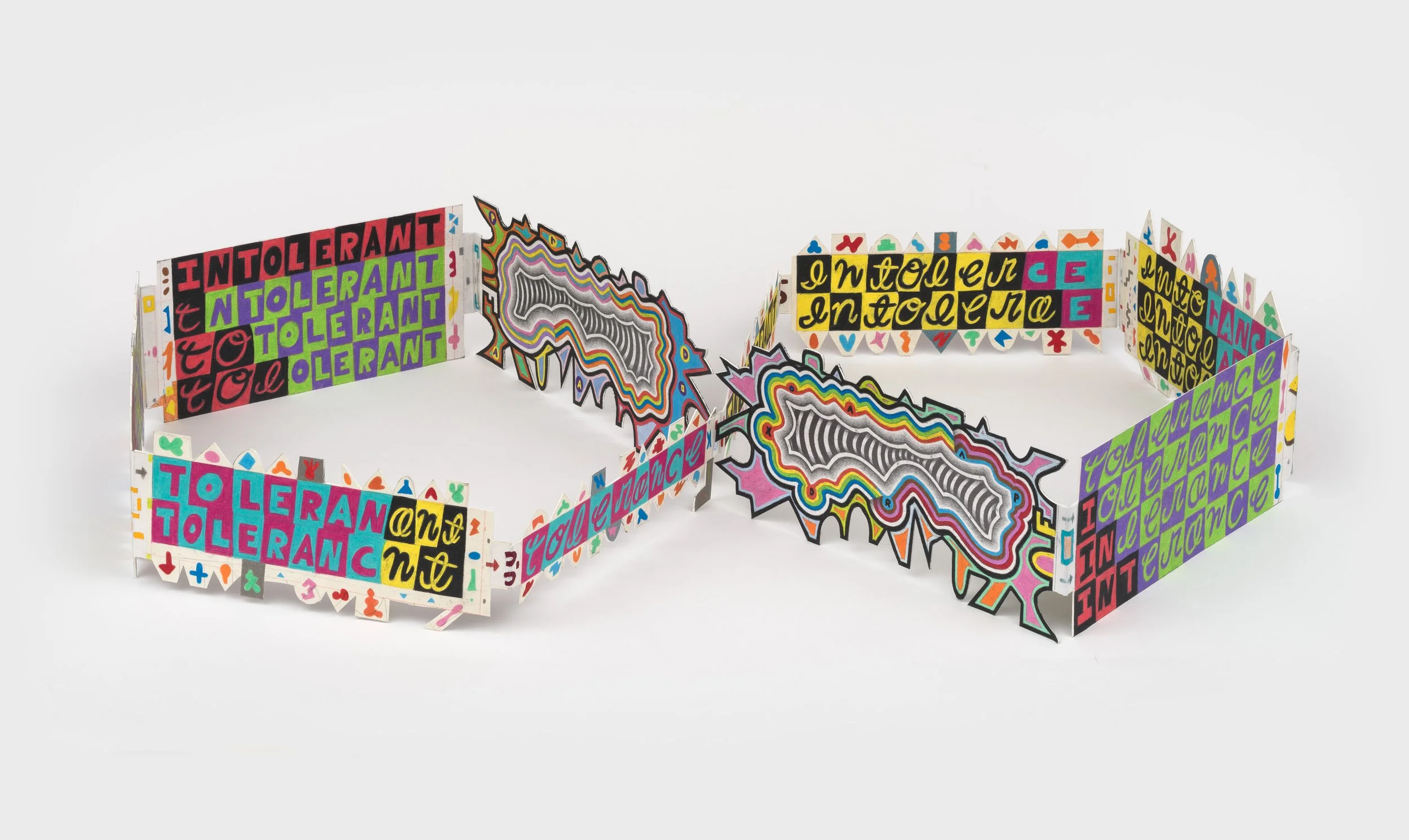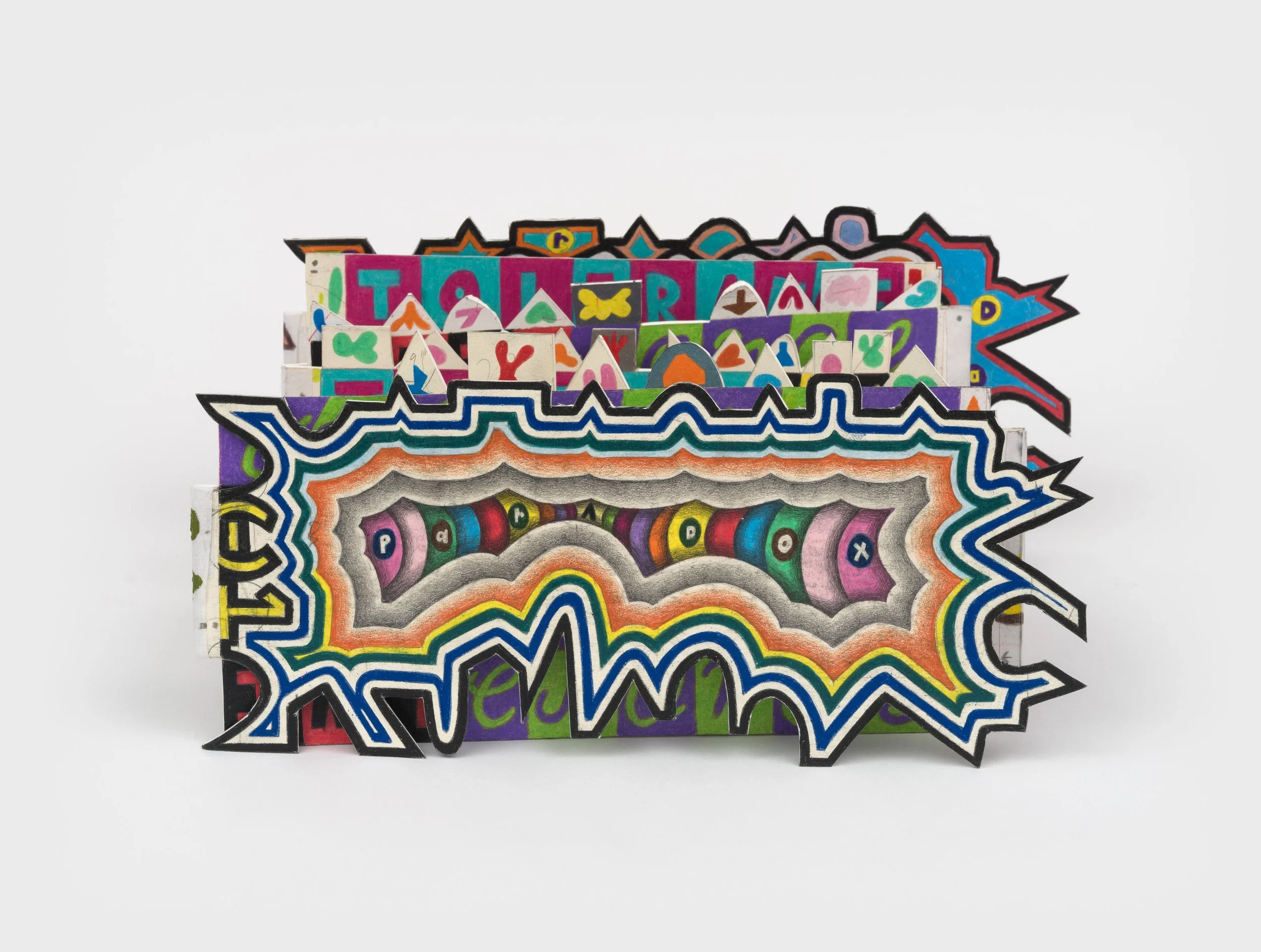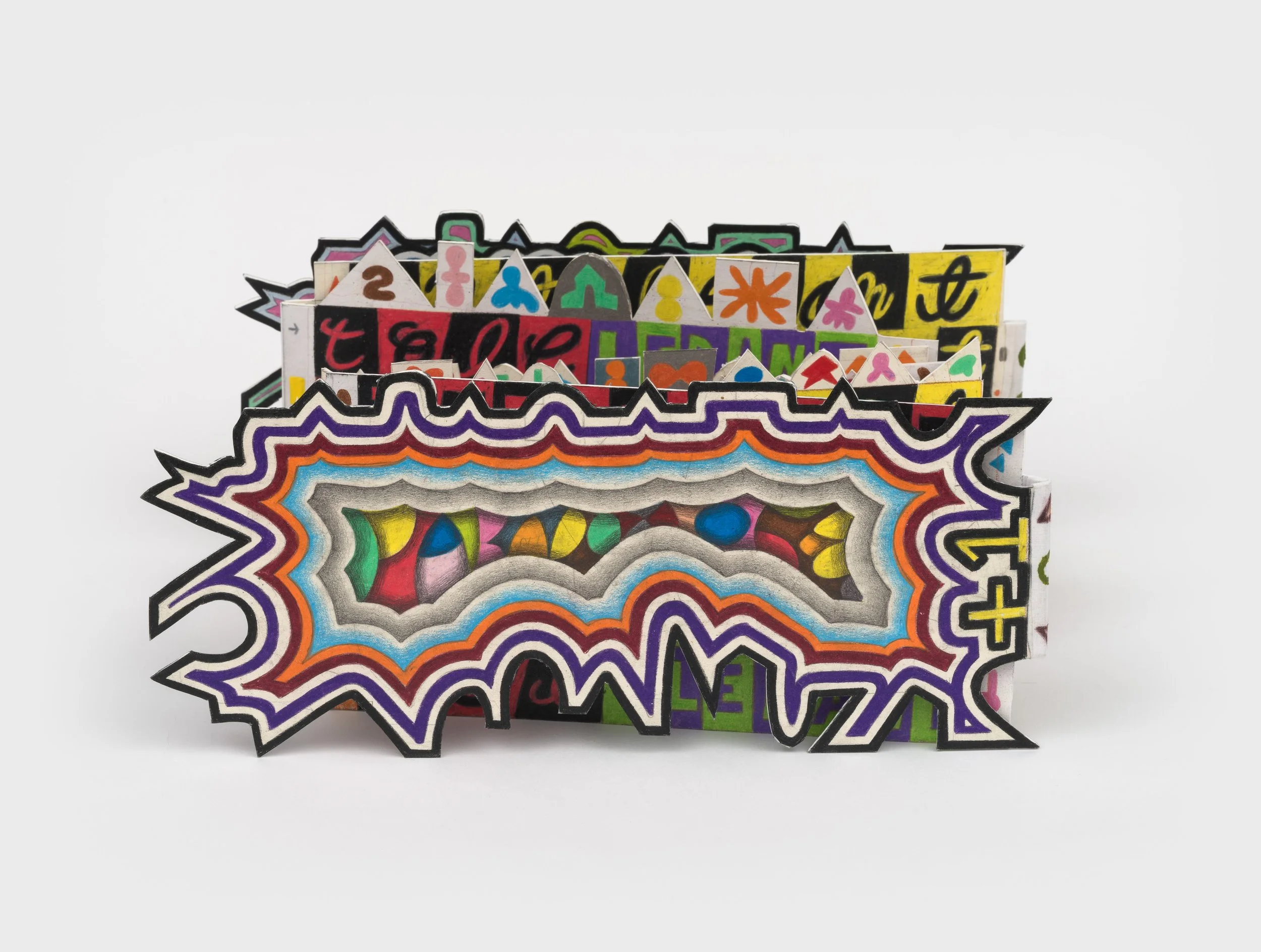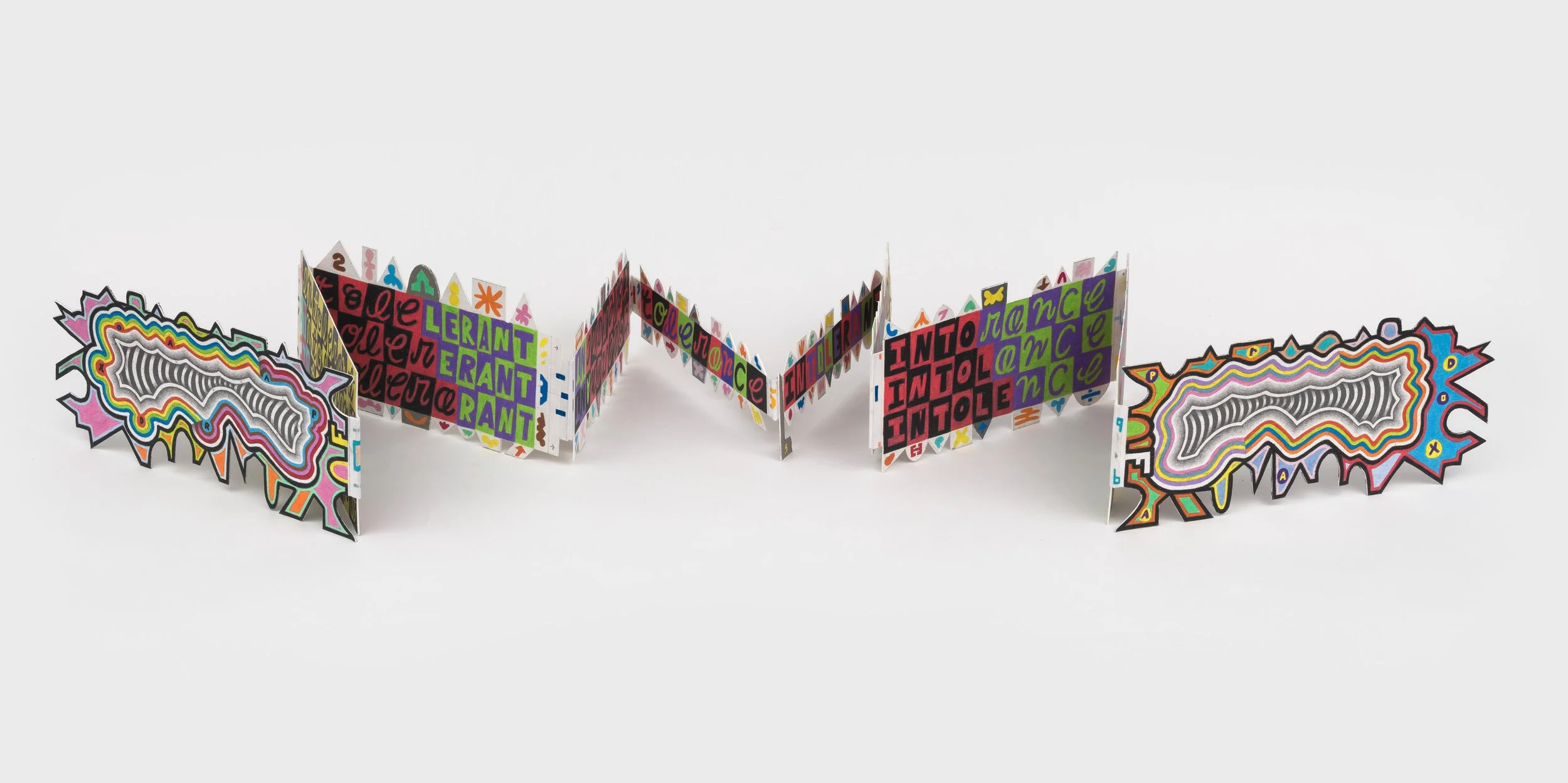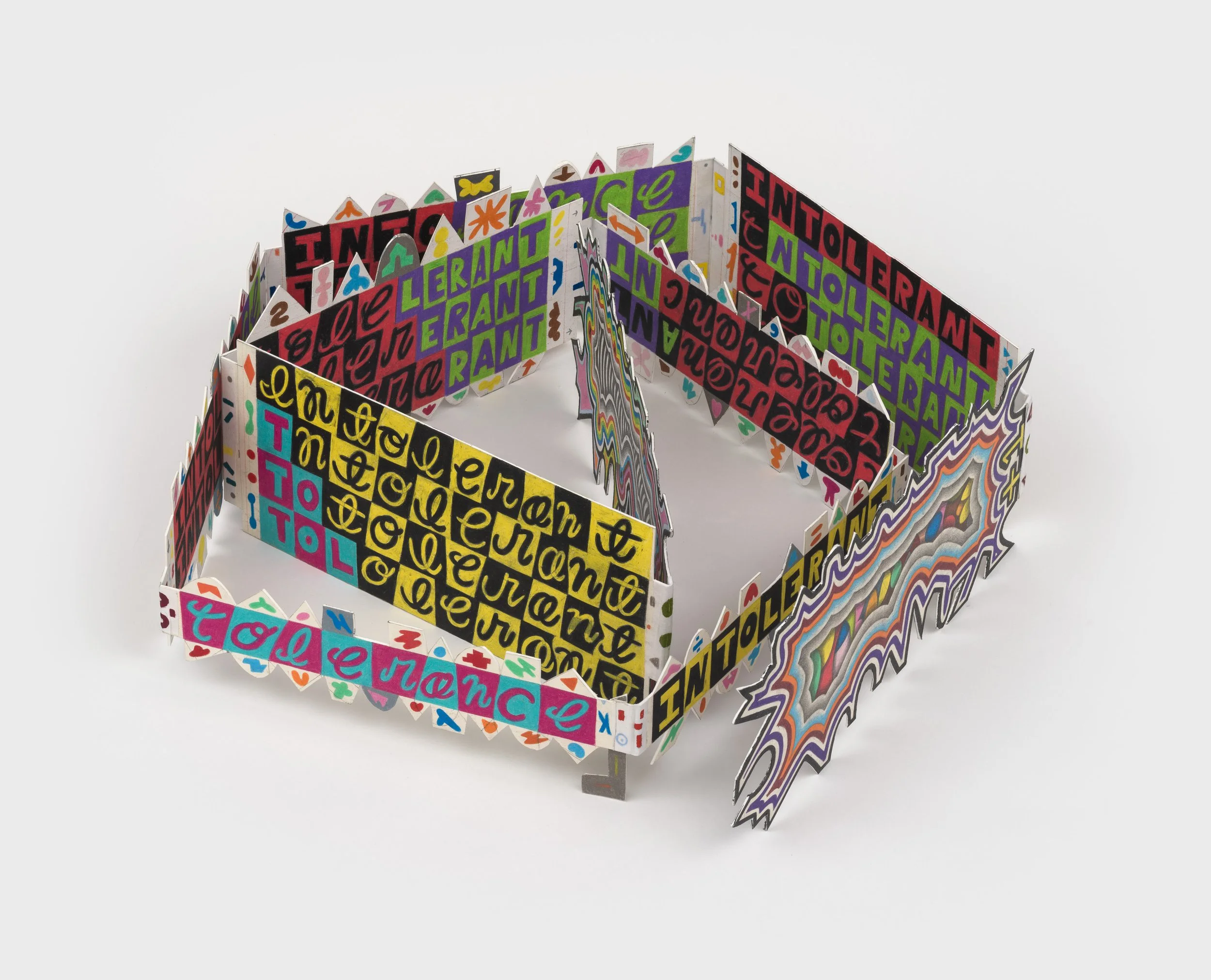pAraDoOx of In Tolerance
Accordion Style Book: Colored pencil, graphite, acrylic on archival board
Folded: 6"(height) X 13.5" (width) X 4.1" (depth)
Fully Extended: 6" X .25" X 139"
Arranged: 6" X 17" X 39.75"
The Paradox of Tolerance holds that when tolerance is extended to the intolerant, it risks enabling intolerance to dominate, thereby eroding the very principle it depends on. Within this artist book, I transpose that intrinsic contradiction through a process of linguistic and graphic morphing, a gradual and incremental displacement of one word by another through sequential letter substitutions, positional shifts, and visual transformations. Moving from left to right and front to back, the letters, colors, and relative positions of the words TOLERANCE and INTOLERANCE progressively exchange places, structurally enacting the paradox itself. Each word eventually occupies the other’s position, then returns to its origin, only to begin morphing again in an endless loop.
I also embed an inverse paradox, my own proposition, that intolerance of intolerance can itself become a form of self-negation, revealing an unresolved tension between resistance and complicity. By mapping linguistic instability onto ideological conflict, I mirror how language and belief systems shift, erode, and reconstitute over time.
I make the structure deliberately mutable, lacking a definitive beginning or end. Colors alternate and shift in sync with the letters, reinforcing the cyclical nature of ideological struggle. When unfolded or rearranged, the book can be read linearly or as a continuous loop, like a Möbius strip or infinity symbol, a recursive cycle of opposing beliefs. I trace the cover from the book’s closed outline, compressing its interior into a mirrored silhouette that turns contradiction into sculptural form.
The book’s looping structure and infinite variations suggest the instability of conviction and the paralysis that arises when contradiction becomes the only constant. Rather than illustrating paradox, the piece becomes the paradox.
